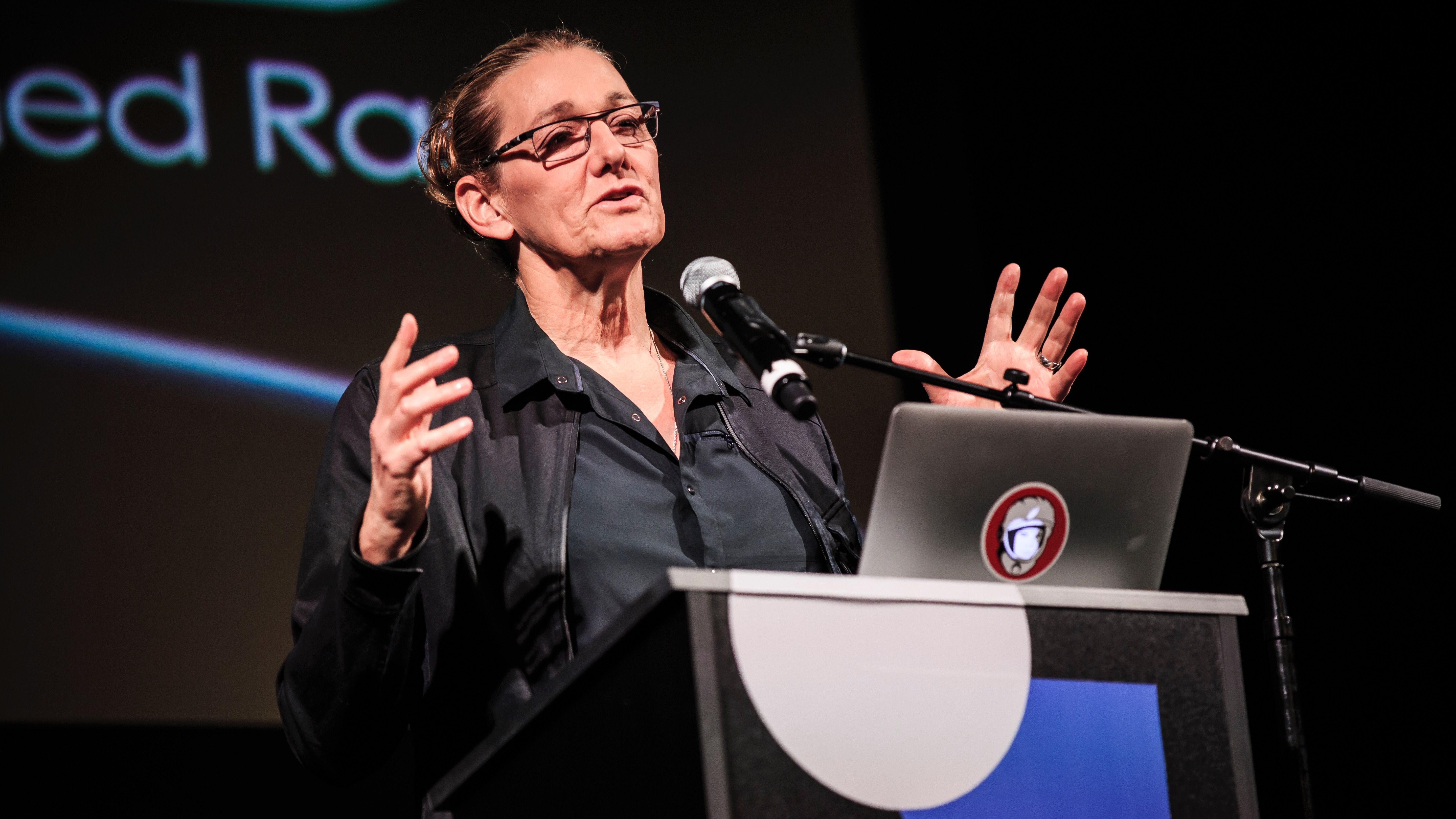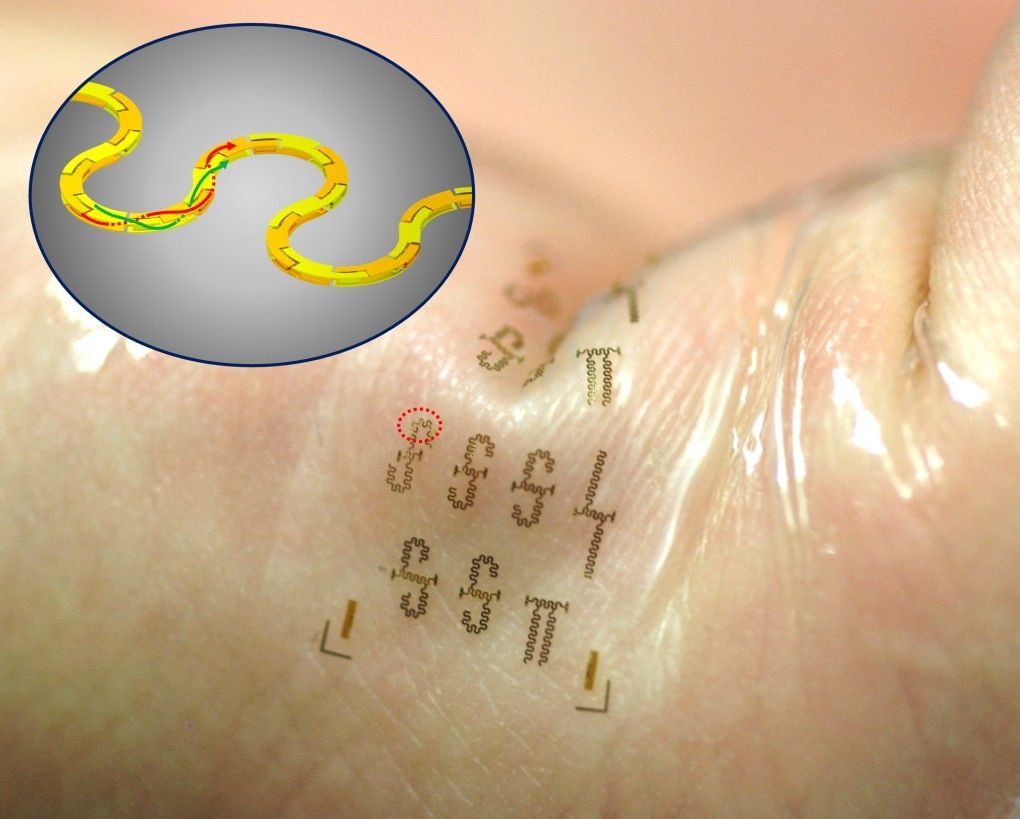These sunglasses let you listen to music while still hearing the rest of the world.
Category: media & arts – Page 135

University of Surrey Professor and BBC presenter receives Stephen Hawking Medal
Nice.
Renowned physicist, author and broadcaster, Professor Jim Al-Khalili OBE, has been awarded the inaugural Stephen Hawking Medal for Science Communication.
Professor Jim Al-Khalili is the first person to be honoured for his contribution to science with this, first medal of its kind, at STARMUS International Science and Arts Festival in Tenerife on 29 June 2016.
Stephen Hawking Medal recognizes the work of those helping to promote the public awareness of science through different disciplines such as science communication, music, arts and cinema.

Astronomers Recorded This Eerie Music From a 13-Billion-Year-Old Star
Space is not the soundless vacuum movies would have us believe. In fact, judging by these eerie recordings of the music being thrown off by the oldest stars in the Milky Way, space actually sounds like a bit of a party.
The recordings were created by a team of scientists led by Andrea Miglio of the University of Birmingham, using data from NASA’s Kepler missions. After measuring the acoustic oscillations of some of the furthest known distant stars in the Milky Way’s M4 star cluster, the researchers were able to use that data to recreate the sounds and get an idea of just what noises the stars are throwing off. It’s a cacophony, for sure—but a surprisingly musical one that could slide pretty seamlessly into an ambient house track of your choice. (Free idea, DJs.)
Besides being excellent listening, the sounds are also scientifically useful. Measuring the tones from each star let the researchers derive a formula, which they’ve published today in Monthly Notices of the Royal Astronomical Society, to get more precise measurements of star masses and ages. Since the stars are so old, in some cases up to 13 billion years, researchers hope to use the sounds to get even more information about what the universe was like way back then.

$17M to shape the future of music
Very cool!
Schulich’s Music Multimedia Room has been used as a laboratory for CIRMMT and a favourite recording studio for orchestra-size ensembles since the Elizabeth Wirth Music Building opened in 2005.
By Lev Bratishenko.
The Centre for Interdisciplinary Research in Music Media and Technology (CIRMMT), established by McGill, Université de Montréal and Université de Sherbrooke in 2000, is known for its virtual acoustics work. Some Montreal concertgoers will recall their rare and memorable concerts where the room’s acoustics change at the push of a button. But CIRMMT’s many projects also include research on engineering, information technology, the science of music performance and expanded musical practice.

Entrepreneur and CEO Martine Rothblatt thinks we’ll 3D print new bodies and live forever on the internet
When you think about the headliners at a music festival, it’s unlikely that the first person to pop into your head would be Martine Rothblatt—the founder of Sirius XM, the one-time highest-paid female CEO in the world who made a robot clone of her wife, and the founder of the Terasem religion, which believes we’ll live forever by uploading our consciousness to the cloud. But Moogfest, a four-day citywide festival of music and technology in Durham, North Carolina, was not the average music festival. Unlike other festivals that make cursory overtures to technology, Moogfest dedicated as much time to explaining how technology influences creativity as to the creative output itself, even listing headline ‘technologists’ alongside its top-billed musical acts.
On the festival’s second day, Friday 20 May, Rothblatt took the stage to talk to a packed house at Durham’s Carolina Theater, in an atmosphere that felt far more like a TED talk than a music fest. Rothblatt, who is transgender, discussed the contentious North Carolina HB2 law, which bans transgender people from using public bathrooms of the gender they identify with; the idea that creativity would be better encouraged by free college tuition; and how she got to a point where she and her company, United Therapeutics, can actually think about 3D printing new body parts, and leaving our bodies behind—if we want. “You want to win more than you want to live,” she told the rapt crowd. “You yell ‘Geronimo’ as you jump crazily into monopolistic opposition.”
Quartz sat down with Rothblatt after her talk to chat more about her thoughts on AI, living forever, free education, and what happens to the soul once we’ve made digital copies of ourselves.
A Sci-fi Cyberpunk Thriller HD: “Temple”
ENJOY!!! 2045 A.D. Cybernetically enhanced beings are in control of society. A new genetic disease is making humans reject their own organs, forcing one man to steal cybernetic implants from others to survive. By director Nguyen-Anh Nguyen.
Temple is a concept for a feature film project, produced by the team of the Akira Project.
For media/financing enquiries contact: [email protected]
**Check out this class by Anh about indie filmmaking and how he made the Akira Project and Temple. http://skl.sh/anh
Follow us:
Facebook: https://www.facebook.com/templefilm
Twitter: https://twitter.com/templefilm

Fast, stretchy circuits could yield new wave of wearable electronics
The consumer marketplace is flooded with a lively assortment of smart wearable electronics that do everything from monitor vital signs, fitness or sun exposure to play music, charge other electronics or even purify the air around you — all wirelessly.
Now, a team of University of Wisconsin—Madison engineers has created the world’s fastest stretchable, wearable integrated circuits, an advance that could drive the Internet of Things and a much more connected, high-speed wireless world.
Led by Zhenqiang “Jack” Ma, the Lynn H. Matthias Professor in Engineering and Vilas Distinguished Achievement Professor in electrical and computer engineering at UW–Madison, the researchers published details of these powerful, highly efficient integrated circuits today, May 27, 2016, in the journal Advanced Functional Materials.


Apple’s flirtation with buying HBO parent hints at content ambitions
While Amazon, Google, and Microsoft are moving forward with nextgen technologies such as VR & AR, QC, bio & nano technologies, etc used to advance areas such as Singularity and longevity.; Apples going bigger in the entertainment and media space.
Even if Apple never made an actual move to buy Time Warner, a tentative approach shows that the iPhone maker is serious about getting into media content.
Eddy Cue, who’s in charge of iTunes and Apple Music, brought up the idea of a possible deal with Time Warner corporate strategy head Olaf Olafsson in a meeting late last year, according to a person familiar with the situation. While the two never started negotiations, Time Warner, which owns HBO and the Warner Brothers studio, is on the top of the list of media companies Apple would buy should it eventually commit to the content business, the person said.
As iPhone sales slow, Apple is under pressure to show that it can grow in other areas, particularly in services. Chief Executive Officer Tim Cook has emphasised the expansion of non-hardware businesses such as music, the App Store and iCloud as a way of stabilising revenue.

Force-feeling phone: Software lets mobile devices sense pressure
Temporary concept; however, those first alerts (aka help me; I fallen and can’t get up) already covers this plus with the direction we’re going with BMI in the next 5 years this will not be needed.
What if you could dial 911 by squeezing your smartphone in a certain pattern in your palm? A different pattern might turn the music on or flip a page on the screen.
New software developed by University of Michigan engineers and inspired, in part, by a Batman movie, could give any smartphone the capacity to sense force or pressure on its screen or body. ForcePhone offers new ways for people to command their mobile devices.
The software could also enable users to push a bit harder on a screen button to unlock a menu of additional options, similar to right-clicking with a mouse. The developers envision these and many other uses for their technology, which could offer the masses a coveted feature of the latest generation of smartphones.